Beyond delicious meals: How McDonald's Philippines contributes to improving the environment
Toward a more sustainable future with its groundbreaking initiative — the Green and Good Campaign
While fast food restaurants offer quick service and affordable meal options that provide convenience for consumers, food production, in general, has been a significant contributor to climate change and the increase of greenhouse gas (GHG) emissions, responsible for 26 percent of global GHG, according to Our World in Data Organization.
In addition, the environmental impact of plastic packaging is aggravated by how long it takes for these products to decompose and disappear. This prolonged degradation cycle further impacts our ecosystem and causes additional harm.
Fortunately, most food production companies are now environmentally conscious. Along with that, fast-food giant McDonald's Philippines has taken remarkable actions Through this campaign, the company embraces a commitment to environmental responsibility and seeks alternative, sustainable solutions in its day-to-day operations.
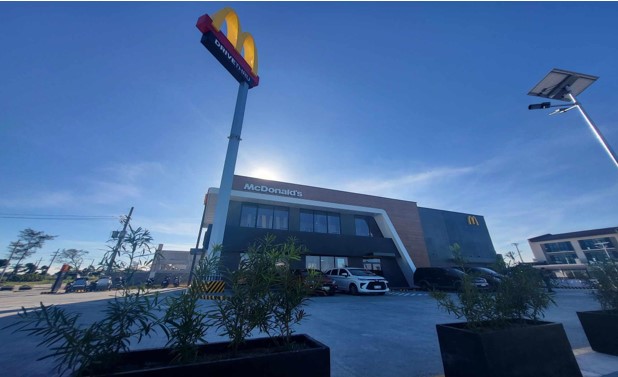
The campaign was launched in March 2020 when the first Green and Good store was established at UN Del Pilar in Manila. On Nov. 30, 2023, McDonald’s PH launched its 7th flagship Green and Good store in the country, located at Ayala Cresendo, Luisita, Tarlac City, the 12th McDonald’s store in the province of Tarlac. The store is open 24 hours a day and is available for dine-in, take-out, ride-thru, McDelivery, McCafe, and party areas.
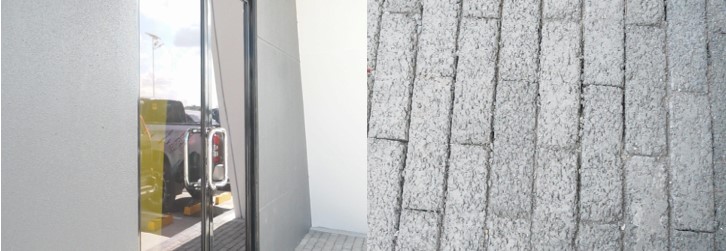
What’s in the campaign
McDonald’s Ayala Cresendo has integrated green building technologies for the construction of the establishment, such as Light Gauge Steel Framing that uses 25 percent recycled steel building frames; Fiber Cement Board as a sustainable alternative to traditional concrete masonry; Eco-friendly paint made with Low Volatile Organic Compound (VOC); Eco-pavers and eco-bricks made out of shredded plastic; and Concrete Fiber as an alternative for reinforcement bars on the driveways and pavements.
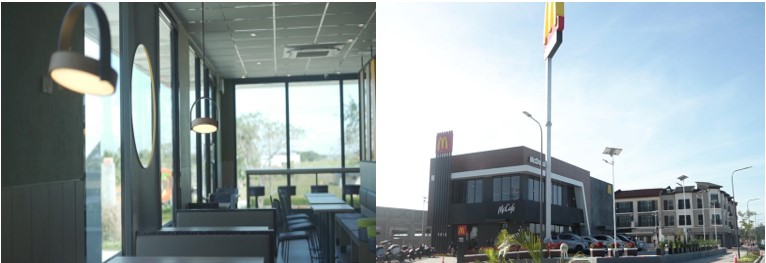
Furthermore, they also incorporated several practices as part of the utility-efficient solutions, like the use of full LED lights, solar lamp posts, and installation of full solar rooftops to produce clean and renewable energy. The store also has photo and motion sensors, these are automated lights used in the restaurant’s toilets, stock rooms, and signages that are only activated when motion is detected. It also has high-performance glass film that helps reduce the temperature inside the building with its high heat rejection, a Variable Refrigerant Flow (VRF) Aircon System, and an inverter technology air-conditioning that reduces energy consumption.
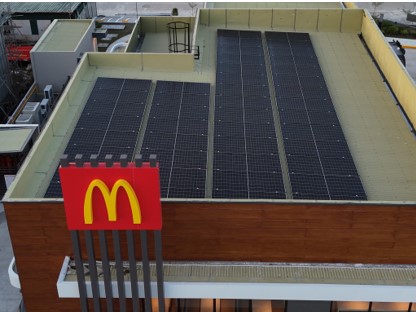
To save on water consumption, the restaurant has its Water Ultrafiltration system for safe and quality water, an efficient water heater, and a low-flow urinal for less water consumption. An Energy Management System is also used for real-time monitoring and eliminating unnecessary hours of electricity waste. Aside from that, McDonald’s Philippines has stepped up the dining experience for their customers by having an innovative outdoor dining area for cyclists to dine comfortably without worrying about the safety and security of their bikes.
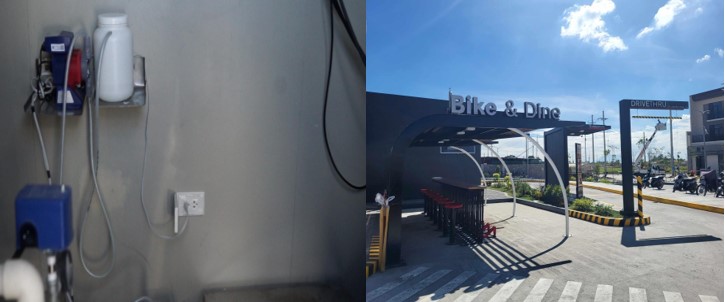
What’s behind the campaign
With the desire to contribute for a better environment, McDonald’s Philippines’ environment-friendly initiative goes beyond a company project.
“Sustainability for McDonald’s is not just a project or campaign, but it’s actually how we conduct our business. It is imperative for the brand that we scale responsibly and operate our stores sustainably to minimize the impact that we have on the environment, so it’s really how we do our business,” Adi Timbol-Hernandez, McDonald’s Philippines AVP for Corporate Relations & Impact, explained. The restaurant aims to create at least 60 more stores by 2024, with more Green and Good stores to be established.
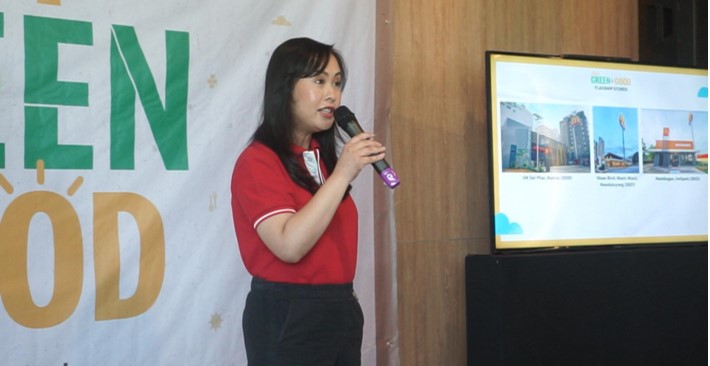
The overall environmental impact of the Green and Good campaign stands on four main pillars, which are the green building solution, energy-efficient solution, packaging and recycling, and the advocacy on championing sustainable active mobility. It aims not only to save and conserve energy but also to reduce the emission of carbon dioxide and waste. To champion this, McDonald’s Philippines is extending its sustainability efforts through information dissemination to their employees on how to effectively and efficiently implement the different solutions as well as other practices like waste reduction and welcoming more two-wheeled vehicles in the store.
Not only to promote the campaign but also to raise awareness, McDonald’s Philippines goes beyond educating their consumers about their sustainable efforts in a creative and fun way. The Green and Good token installed in front of the restaurant can be scanned by the customers, which redirect to an augmented reality experience that features the practices done in McDonald’s Cresendo.
“What’s important I think, when talking about sustainability, is that people or stakeholders should learn more about it, so it’s more about information,” Hernandez added.
Check out the new McDonald’s at Ayala Cresendo, Luisita, Tarlac City, and enjoy your favorite McDonald’s meals in the Green and Good store.